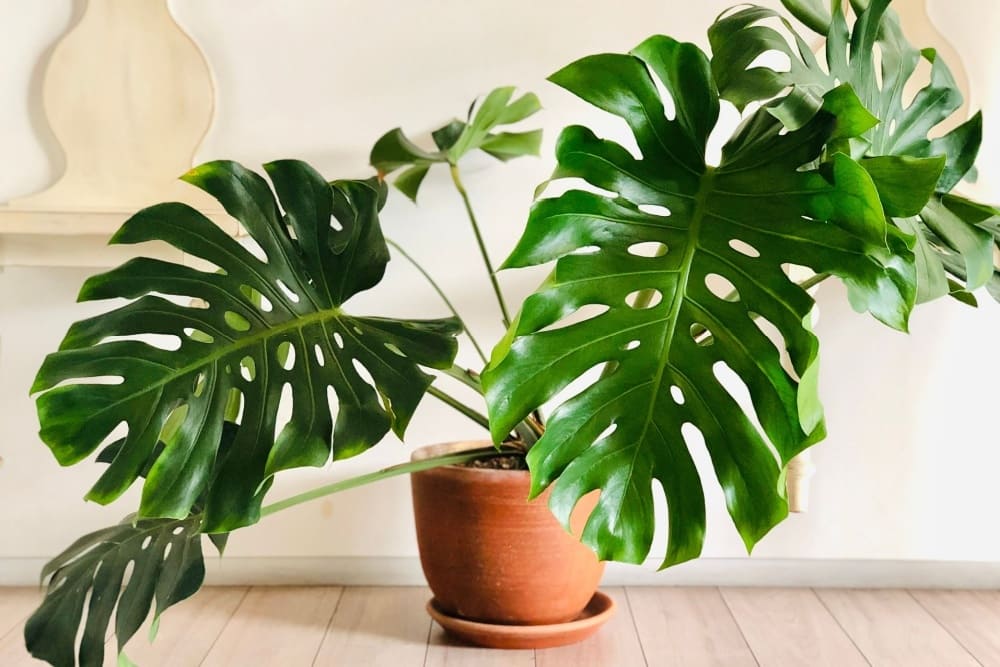Introduction
In the world of indoor gardening, finding the right plants that not only enhance your home’s aesthetic but also thrive in indoor environments can be challenging. The Swiss Cheese Plant (Monstera deliciosa) stands out as an exceptional choice. Known for its unique foliage and relatively low maintenance, this plant offers both beauty and practicality. In this article, we will explore why the Swiss Cheese Plant is a superb addition to your indoor garden, highlighting its characteristics, benefits, and care requirements.
The Swiss Cheese Plant: An Overview
The Swiss Cheese Plant, with its iconic perforated leaves, is a tropical plant native to the rainforests of Central America. Its distinctive appearance and adaptable nature make it a popular choice among indoor gardeners. The plant can grow up to 10 feet in height in its natural habitat but typically remains smaller when grown indoors.
Key Features:
- Leaves: Large, glossy, and deeply lobed, often featuring dramatic holes or splits.
- Growth: Fast-growing with the potential to reach substantial sizes.
- Care Requirements: Minimal, making it suitable for various indoor environments.
Benefits of Swiss Cheese Plants for Indoor Gardens
1. Aesthetic Appeal
Swiss Cheese Plants are renowned for their striking foliage. The large, perforated leaves add a touch of the exotic to any indoor space, making them a focal point in any room. Their unique appearance can complement a range of interior design styles, from modern minimalism to bohemian chic.
2. Air Purification
Research has shown that certain indoor plants can help improve air quality by filtering out toxins and increasing oxygen levels. The Swiss Cheese Plant is no exception. It can help remove pollutants such as formaldehyde and benzene, contributing to a healthier living environment.
3. Low Maintenance
One of the most attractive features of the Swiss Cheese Plant is its low maintenance requirements. It is resilient and can adapt to various light conditions, though it prefers bright, indirect light. It does not require frequent watering and can tolerate periods of neglect, making it ideal for busy individuals.
4. Versatility
Swiss Cheese Plants are versatile and can thrive in various indoor conditions. Whether you have a bright, sunny room or a space with lower light levels, this plant can adapt and continue to grow. Its adaptability makes it a perfect choice for different rooms, from living areas to offices.
Care Tips for Swiss Cheese Plants
1. Lighting
While Swiss Cheese Plants are adaptable, they do best in bright, indirect light. Direct sunlight can scorch the leaves, while too little light can inhibit growth and reduce the plant’s characteristic perforations.
2. Watering
Water the Swiss Cheese Plant when the top inch of soil feels dry. Overwatering can lead to root rot, so ensure the pot has good drainage. During winter, reduce watering as the plant’s growth slows down.
3. Humidity
Being a tropical plant, the Swiss Cheese Plant appreciates higher humidity levels. Regular misting or placing the plant near a humidifier can help maintain optimal conditions.
4. Repotting
Repot the Swiss Cheese Plant every 1-2 years to refresh the soil and accommodate its growing roots. Choose a pot that is only slightly larger than the current one to prevent waterlogging.
Table of Care Requirements
| Care Aspect | Recommendations |
|---|---|
| Light | Bright, indirect light |
| Watering | When top inch of soil is dry |
| Humidity | Higher humidity preferred |
| Repotting | Every 1-2 years |
Conclusion
The Swiss Cheese Plant is a fantastic addition to any indoor garden, offering a blend of beauty, functionality, and ease of care. Its unique foliage, combined with its ability to improve air quality and adapt to various indoor environments, makes it a valuable choice for both novice and experienced gardeners. By following the care tips outlined in this article, you can enjoy the lush, tropical charm of the Swiss Cheese Plant in your home.
Q & N
Q: Can the Swiss Cheese Plant be grown in low light conditions? A: While it can tolerate lower light levels, the Swiss Cheese Plant performs best in bright, indirect light. Insufficient light may result in slower growth and fewer perforations in the leaves.
Q: How often should I fertilize my Swiss Cheese Plant? A: Fertilize your Swiss Cheese Plant once every 2-4 weeks during the growing season (spring and summer). Reduce or stop fertilizing during the winter months when growth slows down.
Q: What should I do if my Swiss Cheese Plant’s leaves start turning yellow? A: Yellowing leaves can indicate overwatering, poor drainage, or low light conditions. Check the plant’s soil moisture, ensure proper drainage, and adjust the light conditions as needed.

